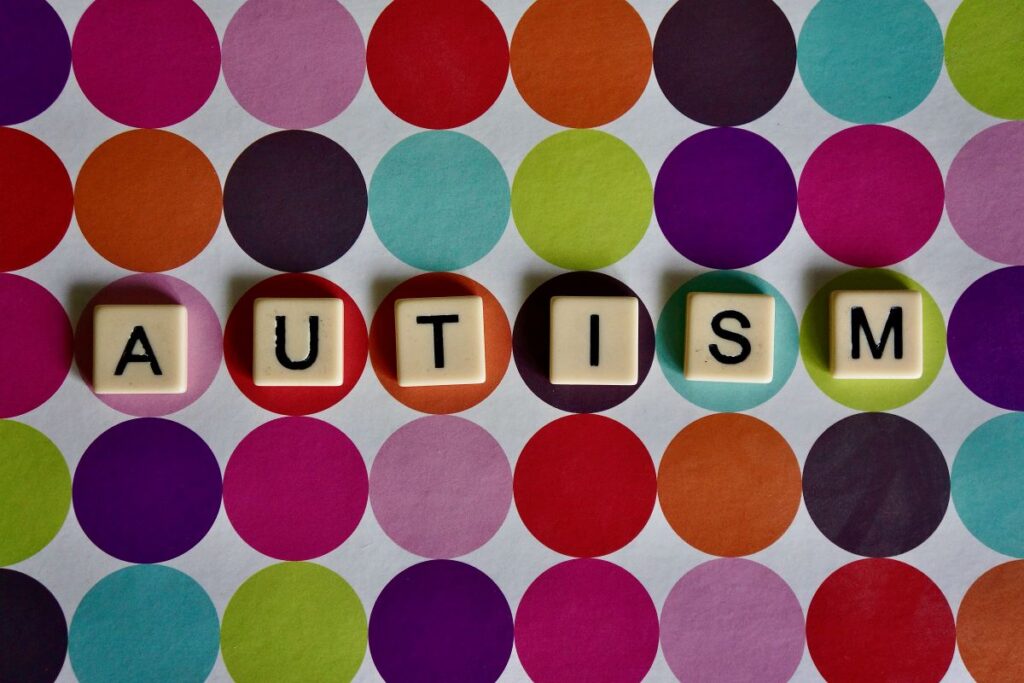
Autistic adults (diagnosed with autism according to the diagnostic criteria, American Psychological Association 2013) are more likely to die by suicide than non-autistic adults (Kolves et al 2021) with up to 66% reporting lifetime suicide ideation, plan, or attempt (Cassidy et al 2014).
One potential contributor is self-harm, which is also reported at higher rates in autistic than non-autistic people (Cassidy et al 2018). However, the nature of this relationship is difficult to estimate given the variety of self-harm prevalence estimates reported by studies to date. Estimates vary possibly due to different definitions of self-harm or study design.
Thus, a recent systematic review and meta-analysis by Blanchard et al (2021) aims to provide a precise estimate of the risk of self-injurious behaviour and suicidality amongst autistic children and adults. This is vital to inform future research in this area and the development of evidence-based interventions.

Autistic people are more likely to report self-harm than non-autistic people, but how much greater is the risk?
Methods
This Prospero registered review followed PRISMA (Preferred Reporting Items for Systematic Reviews and Meta-analyses) and MOOSE (Meta-analysis of Observational Studies in Epidemiology) guidelines.
Eligible studies included (i) observational studies; (ii) a group of diagnosed autistic individuals; (iii) a group of non-autistic people; (iv) compared self-injurious behaviour, suicidal ideation, suicide attempt, or suicide between these groups; (v) quantified at least one association between autism and self-injurious behaviour or suicidality. Detailed database searches included PubMed, Embase, CINAHL, PsychINFO, Web of Science from year of inception to June 2020 without language, age, or date restrictions. Grey literature was also accessed via conference abstracts and websites.
Studies were assessed for risk of bias and subgroup analyses were performed around either suicidality (those studies with outcomes associated with suicide ideation, attempt or suicide death) or self-injurious behaviour (non-accidental physical harm with no specified intent or suicide or sexual arousal). Results were stratified according to these subgroups and pooled as adults (age >=20) or children (age<=20).
Results
31 studies met inclusion criteria. Twenty-nine studies showed significant association between autism and self-harm, with similar risk for self-injurious behaviour and suicidality. Studies were from Europe, Asia and North America, with age range from toddlers to older adults. Subgroup analysis by age included 16 studies in children, 13 studies in adults and 2 studies in both children and adults. Study quality was moderate to high.
- In pooled data, the odds of self-harm in autistic people were more than 3 times that in non-autistic people (pooled OR, 3.26; 95% CI, 2.74 to 3.89)
- Results were similar in respect of both self-injurious behaviour (pooled OR, 3.18; 95% CI, 2.45 to 4.12) and suicidality (pooled OR, 3.32; 95% CI, 2.60 to 4.24)
- Age was the only significant moderator with adults at greater risk of self-harm than children (OR, 1.45; 95% CI, 1.04 to 2.03)
- An effect found in relation to both self-injurious behaviour (adults OR 3.38 [95% CI, 2.54 to 4.50]; children OR 2.99 [95% CI, 1.93 to 4.64])
- and suicidality (adults OR 3.84 [95% CI, 2.78 to 5.30]; children OR 2.53 [95% CI, 1.70 to 3.76]).

Meta-analysis of 31 studies reported odds of self-harm were 3 times higher in autistic than non-autistic people. Adults reported higher rates than children.
Conclusions
Overall, this review and meta-analysis concluded that being autistic was significantly associated with increased risk of self-injurious behaviour and suicidality compared to non-autistic people. This finding was consistent in child and adult samples, across geographical regions, in diverse study design, methods and clinical settings.
This finding is in line with research reporting autistic youth are more likely to attend emergency departments for self-inflicted injury compared to non-autistic youth (Kolb et al 2016).
This adds to a growing body of knowledge reporting consistent effects across studies but more research is needed to understand why.

Autistic children and adults are at increased risk of all forms of self-harm compared to non-autistic people. More research is needed to understand why.
Strengths and limitations
This is the first systematic review and meta-analysis of comparative prevalence rates of self-harm in autistic people, including suicide attempt data. This extended the findings of a previous meta-analysis which reported similar findings, but did not include comparison groups of non-autistic people (Steenfeldt-Kristensen, Jones & Richards 2020). Moreover, this review used the narrower definition of self-injurious behaviour typically conceptualised as challenging and/or restricted repetitive behaviour characteristic of autism and often associated with a co-occurring intellectual disability.
Limitations include that this study did not control for co-occurring conditions such as attention deficit hyperactivity disorder and intellectual disability. Studies varied greatly in their design and the outcome measures they used. Given changes in diagnostic criteria for autism over time, future research could consider exploring the role of autistic traits or characteristics rather as well as formal autism diagnosis.

This study used a broad definition of self-harm to go beyond stereotyped restricted/repetitive behaviours and make the crucial link with high suicide rates.
Implications for practice
The increased odds of self-harm mean that there is an urgent need for targeted interventions to identify and mitigate the risk in those with autism. This could include interventions such as safety planning, mental health support and support in emergency departments. Future research should explore mechanisms driving this effect, and develop tailored measurement tools or interventions to support autistic people who experience these difficulties.

There is an urgent need for tailored interventions to support autistic people who self-harm.
Statement of interests
Mirabel is a researcher at University of Nottingham in the Mental Health in Autism Group led by Dr Sarah Cassidy. Mirabel works in partnership with autistic people to understand why they are more likely to experience self-harm and suicidal thoughts and behaviours and to design interventions and measurement tools to address this. In 2022 we are recruiting participants to undertake an adapted card sort task for self-harm to understand whether the reasons that autistic people self-harm are different than for non-autistic people. Mirabel is also a PhD student at Coventry University. Her research aims understand why autistic people are at increased risk of suicide using theoretical models.
Links
Primary paper
Blanchard, A., Chihuri, S., DiGuiseppi, C. G., & Li, G. (2021). Risk of self-harm in children and adults with autism spectrum disorder: a systematic review and meta-analysis. JAMA Network Open, 4(10), e2130272-e2130272.
Other references
Cassidy, S., Bradley, P., Robinson, J., Allison, C., McHugh, M., & Baron-Cohen, S. (2014). Suicidal ideation and suicide plans or attempts in adults with Asperger’s syndrome attending a specialist diagnostic clinic: a clinical cohort study. The Lancet Psychiatry, 1(2), 142-147.
Cassidy, S., Bradley, L., Shaw, R., & Baron-Cohen, S. (2018). Risk markers for suicidality in autistic adults. Molecular Autism, 9(1), 1-14.
Kalb, L. G., Vasa, R. A., Ballard, E. D., Woods, S., Goldstein, M., & Wilcox, H. C. (2016). Epidemiology of injury-related emergency department visits in the US among youth with autism spectrum disorder. Journal of autism and developmental disorders, 46(8), 2756-2763.
Kõlves, K., Fitzgerald, C., Nordentoft, M., Wood, S. J., & Erlangsen, A. (2021). Assessment of suicidal behaviors among individuals with autism spectrum disorder in Denmark. JAMA network open, 4(1), e2033565-e2033565.
Steenfeldt-Kristensen, C., Jones, C. A., & Richards, C. (2020). The prevalence of self-injurious behaviour in autism: A meta-analytic study. Journal of autism and developmental disorders, 50(11), 3857-3873.
Photo credits
- Photo by Alireza Attari on Unsplash
- Photo by Peter Burdon on Unsplash
- Photo by Tony Hand on Unsplash
- Photo by Paul Castanié on Unsplash
- Photo by Annie Spratt on Unsplash
- Photo by Rod Long on Unsplash
